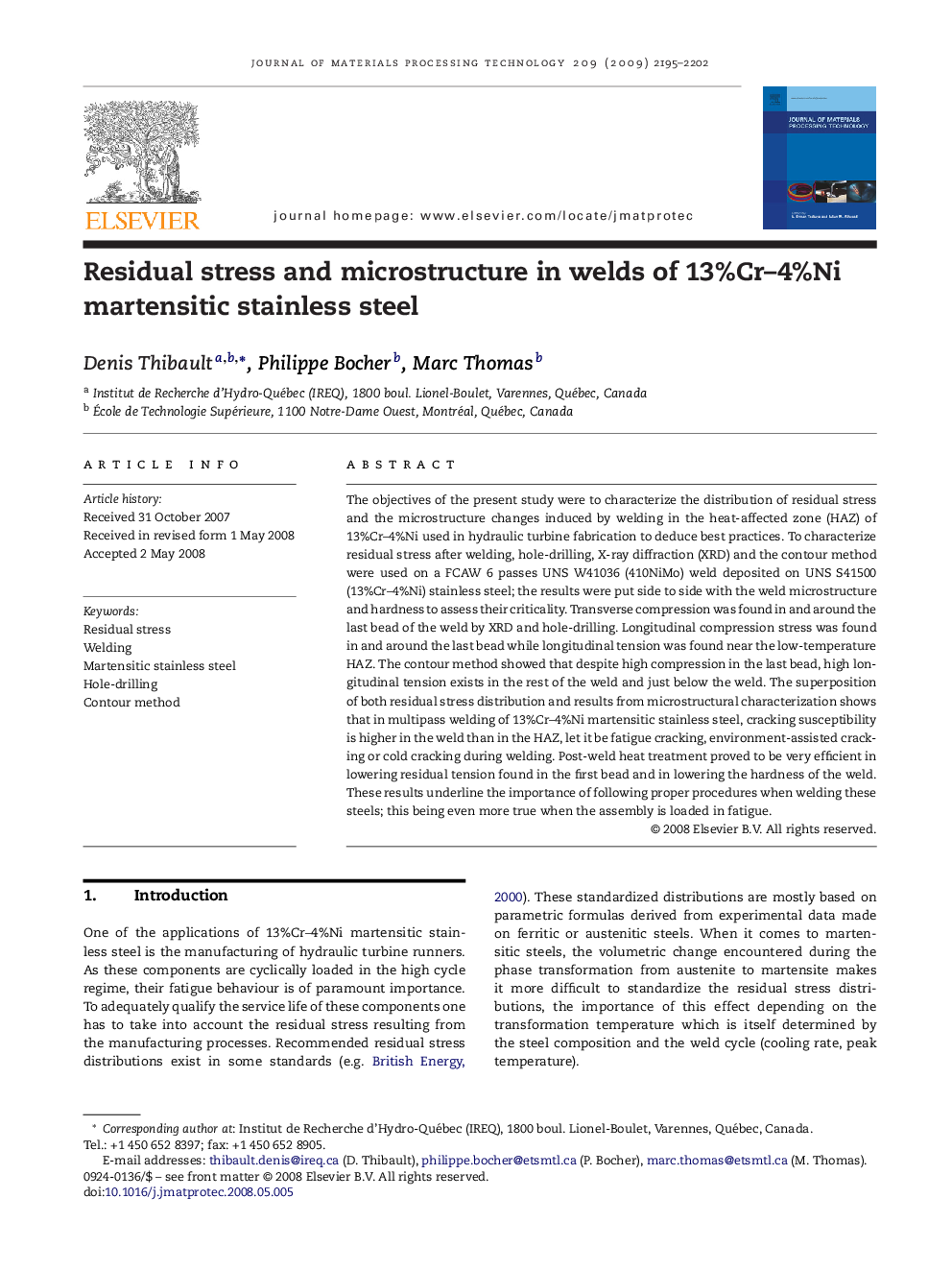| Article ID | Journal | Published Year | Pages | File Type |
|---|---|---|---|---|
| 798614 | Journal of Materials Processing Technology | 2009 | 8 Pages |
The objectives of the present study were to characterize the distribution of residual stress and the microstructure changes induced by welding in the heat-affected zone (HAZ) of 13%Cr–4%Ni used in hydraulic turbine fabrication to deduce best practices. To characterize residual stress after welding, hole-drilling, X-ray diffraction (XRD) and the contour method were used on a FCAW 6 passes UNS W41036 (410NiMo) weld deposited on UNS S41500 (13%Cr–4%Ni) stainless steel; the results were put side to side with the weld microstructure and hardness to assess their criticality. Transverse compression was found in and around the last bead of the weld by XRD and hole-drilling. Longitudinal compression stress was found in and around the last bead while longitudinal tension was found near the low-temperature HAZ. The contour method showed that despite high compression in the last bead, high longitudinal tension exists in the rest of the weld and just below the weld. The superposition of both residual stress distribution and results from microstructural characterization shows that in multipass welding of 13%Cr–4%Ni martensitic stainless steel, cracking susceptibility is higher in the weld than in the HAZ, let it be fatigue cracking, environment-assisted cracking or cold cracking during welding. Post-weld heat treatment proved to be very efficient in lowering residual tension found in the first bead and in lowering the hardness of the weld. These results underline the importance of following proper procedures when welding these steels; this being even more true when the assembly is loaded in fatigue.
